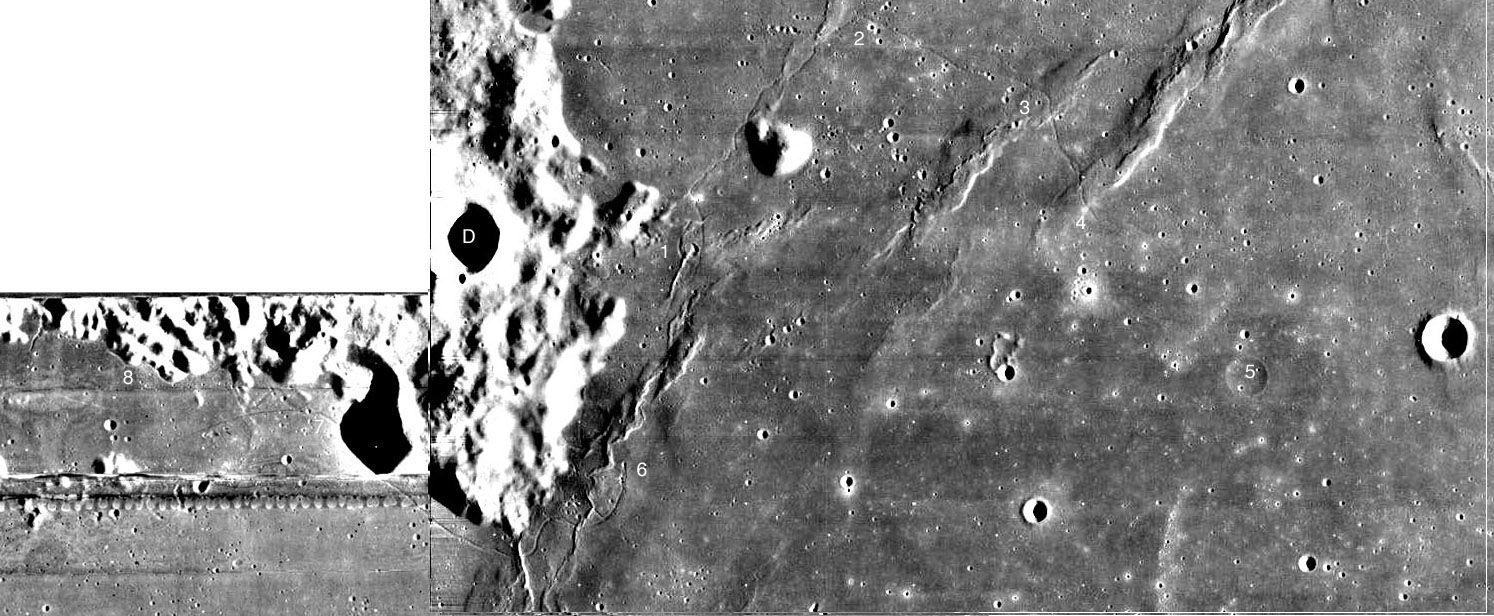Difference between revisions of "January 17, 2008"
| Line 11: | Line 11: | ||
<strong>Related Links</strong><br /> | <strong>Related Links</strong><br /> | ||
Rükl plate 10 | Rükl plate 10 | ||
| − | + | {{wiki/ArticleFooter}} | |
| − | |||
| − | |||
| − | |||
Revision as of 19:49, 1 February 2015
Prom. Laplace Rilles

Lunar Orbiter IV-139 (left) and IV-134 (right); many defects are in the left image.
Rilles are probably much more common than we think. Having become use to the relatively low resolution scans online at the Lunar & Planetary Institute, most people had no experience with the wonderful resolution that the Lunar Orbiter IV frames actually have. The recent rescanning comes much closer to the high resolution giant enlargements I remember working with 30 years ago. Its almost like having the results of a new lunar mission, for the quality is so much superior to the earlier scans. This simple mosaic of two Orbiter IV images shows a little known rille near Promontorium Laplace at the eastern end of Sinus Iridum. I noticed a piece of the rille on Alan Friedman's recent [/January+15%2C+2008 LPOD] image, and then found these Orbiter images to documents it, perhaps for the first time. The narrow rille appears to start (1) near a ridge with a small depression at its northeastern end. The rille wiggles slightly while moving to the upper right (about north) and then turns abruptly to the east (2). This next short straight section, the part detected on Alan's image, is followed by a more curved piece where the rilles cuts through two mare ridges (3 & 4). After the second ridge (4) the rille disappears. Below the possible source (1) is another rille segment that may originate at a small crater (6). I want to join the two rilles together, but the connection is not visible if it exists. From (6)the western rille segment bends around the Prom. Laplace headland and squiggles around the inner shore of Sinus Iridum for about 50 km. It appears that the rille hugs the edge where the Jura Mountains touch the maria for the last detectable part of the rille (8). Did you notice that the maria is darker south of the rille at (3), (4) and (5)? This dark area of maria is the front of a massive younger lava flow that covers the western half of Mare Imbrium. We can get a guess at the thickness of the dark mare lavas where they just cover the 6.5 km wide impact crater (5). A fresh crater of this diameter statistically has a rim height of ~150 m, so the flow is probably at least that deep.
Chuck Wood
Related Links
Rükl plate 10
COMMENTS?
Register, Log in, and join in the comments.



